
The best village trek in the foothills of the Himalayas is an extraordinary experience. Exploring off the main trekking route, we had the opportunity to stay with a local family, sitting on the floor in a smokey hall. Eating whatever the family could offer us or cooking ourselves with the local family is the best experience of the rural Nepali lifestyle.
Recently, my friend Macha from France and I did the trek from Maili village to Pokali Jharan (waterfall). The trek was excellent, not too challenging, with a well-maintained trail. It was remarkably peaceful, no other trekkers on the trail, and offered breathtaking scenery of the Himalayas, including Mount Everest, the world’s highest peak. Instead of commercial lodges, we encountered small local tea shops that offer delicious local foods. I would say, the foods we ate were simply the best. The journey was an unforgettable experience.
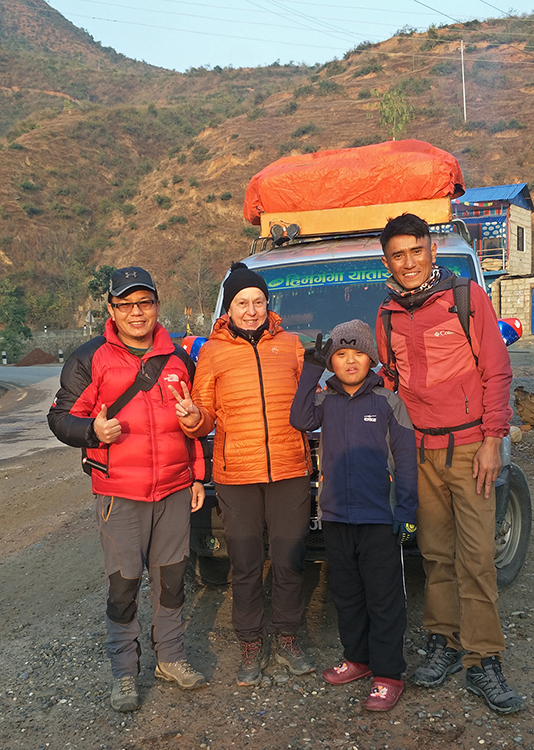
On the First Day: We left Kathmandu early in the morning at 5 am for Maili village. The drive was long, around 245km. The road was winding, narrow, and more than halfway was a bumpy dirt road, which took us over 12 hours to reach our destination. The first part of the road was quite good, but from Manthali to Maili village, it was off-road. We drove through beautiful river valleys, villages, passes, and forests, witnessing incredible scenery throughout the journey, including amazing terraces and mountain villages. It was a fabulous day. We arrived in Maili village just before it got dark.
We stayed at a local house near Maili village school for 2 nights. The family runs a tea shop, also known as a Bhatti, where they sell homemade alcohol. The family has two separate buildings, one for the kitchen and dining area, and another one for sleeping. Typically, Nepali houses don’t have a separate kitchen and dining area. It’s basically one big hall with an open oven without a chimney, so the place was quite smoky. While cooking, we stayed outside or in our room to avoid the smoke.
The rooms were okay, not like the ones you find in commercial lodges. Before our arrival, the Tamang family had cleaned the rooms nicely, changed the bed sheets, and they made the rooms smoke-free. For two days, we ate the local food that the family cooked and offered us. The most food we had were delicious and organic. We also visited my relatives’ (my sister and aunt) house. The best dishes were Nettle Soup, Fried Sukuti (Dried Meat), Roti (whole grain bread fried in oil), Falgi (sweet corn cooked with beans and bones), and freshly fried meat. You won’t find these foods on the regular tourist menu.
Maili village is located on very steep terrain. The houses are spread out, and it’s hard to see one house from another. People cultivate very small terraces, and the place is quite rocky. The population is mainly from the Tamang community, with Sherpas and Chhetris as well. It’s hard to say if it’s a beautiful or very difficult remote village. Definitely, everyday life is very challenging there.
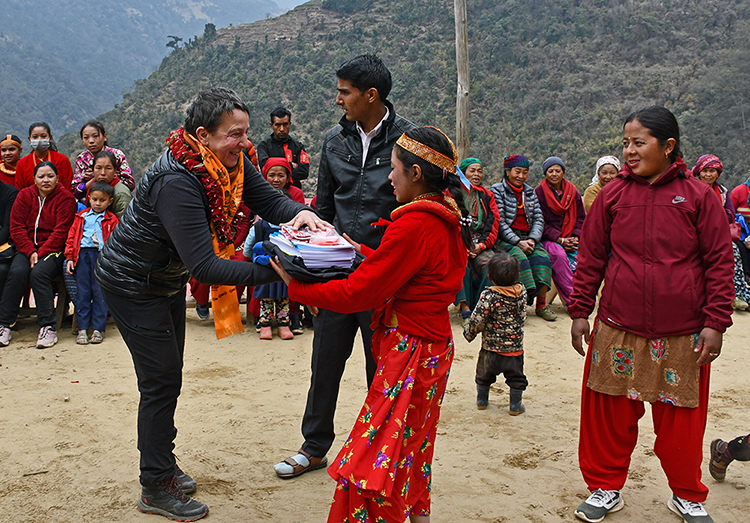
On the second day: we started our day with an uphill hike to my sister’s house early in the morning. Her place appeared a bit congested, with belongings scattered here and there. The upper floor had recently undergone renovation but hadn’t been fully cleaned yet. Since we had left the city and come to this remote village, I suggested to my sister to cook local food. To my delight, my cousin brother had brought freshly picked nettle. While we sipped on the tasty salt butter tea that my sister made, she and my cousin brother cooked Chyakhla Bhat (Chyakhla means corn grits), nettle soup, and sukuti (dry meat). I couldn’t help but wonder if Macha would like the food. But she is such an easygoing and flexible lady. She enjoyed all the food and appreciated it.
After lunch, we made our way back to where we were staying and attended the school program. Since 2015, through the Blossom Charity Project, we have been providing stationery and sports supplies to the students and the school in Maili Village. As in previous years, we distributed school bags, stationery, and sports equipment this year as well. The distribution program had a grand setup, perhaps because they were aware of the presence of a foreign guest. The performances by the young students, both in dancing and singing, were excellent, and the mothers also showcased their talent. We received a warm welcome from the parents, students, and teachers, and we thoroughly enjoyed the day.
After the school program, we spent time conversing with the villagers and teachers. In the evening, we savored Phalgi, fried fresh meat, along with Hopla (local beer mixed with butter and fried eggs), before settling down for the night.
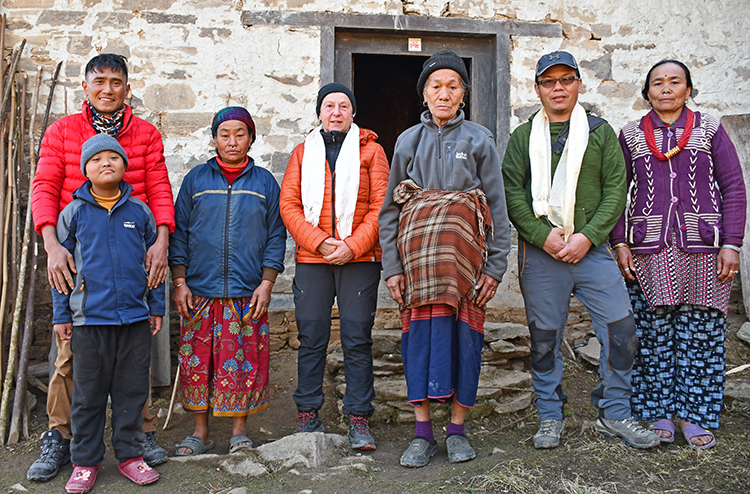
On the third day: On the third day: We started the morning by having tea at our accommodation before making our way uphill to my aunt’s house for breakfast. Upon arrival, my cousin, brother, and aunt were already preparing a delicious meal. We enjoyed a feast of Roti (whole grain bread fried in oil), local fried potatoes, and fried meat, with multiple cups of tea and coffee together. The flavors reminded me of my childhood, and after spending delightful two-and-a-half hours with my aunt’s family, we bid them farewell and continued our journey towards Thole Demba.
It was the first day of our actual trek and a long way to go. We had to ascend about 1200m from Maili village. The morning weather was clear and beautiful, and the surrounding views were captivating. The Himalayan peaks to the northeast were particularly awe-inspiring. Our path mostly consisted of gentle terrain, taking us through small terraces, forests, streams, and charming settlements. We eventually stopped at a tea shop in Majkharka, where three of us had coffee served in huge beer glasses. The coffee was excellent, although the cup was unusually large. It seemed to be a trendy way of serving tea and coffee in the area.
Leaving the tea shop, we gradually descended toward a small river. After crossing a wooden bridge, we encountered a steep uphill climb. It was a challenging and lengthy ascent. At first, we followed the newly constructed dirt road, and later, we took the old hiking path, passing through terraced wheat and corn farms as well as forests. The houses were scattered in the area, with considerable distances between them. On that day, the villages were quiet, likely because a wedding ceremony was taking place in the next village, drawing most of the villagers into the wedding party. Consequently, we didn’t see many people in their homes. Nevertheless, the surrounding scenery was truly breathtaking, with vast forests across the valley, lush green terraces, typical Sherpa houses, and distant mountain views.
After about an hour, hunger started to gnaw at us. There were no shops along the way, so we planned to approach the locals’ houses and request them to cook potatoes and make tea for our lunch. Unfortunately, most villagers weren’t at home. Even Macha, our companion, felt hungry and struggled to climb the hill.
During our climb, Man Tamang mentioned that there was a school further up the hill, possibly with a shop nearby. I suggested he go ahead and check it out. He went ahead while we followed. However, we were disappointed to find no shop there. But we received a phone number from the school, which told us that a local house further ahead had a shop, and the owner could cook food upon request. We called the lady and asked her to prepare tea and cook potatoes for us.
We made a stop at a Sherpa’s house in Dhapisurke village. We met a beautiful lady with her cute baby girl, and their house appeared more organized compared to others we had seen. As we sat down, she greeted us with fresh milk coffee. The boiled local potatoes with garlic and green chili paste tasted exceptionally delicious, likely due to our hunger. After eating plenty of potatoes and several cups of tea, we continued our uphill journey toward our destination.
After we had been ascending for some time, we entered the Pine and Rhododendron forest and touched the fresh snow. The snowy path was a bit slippery but not too challenging. The partly cloudy sky made it chilly. As we climbed for about an hour, we reached Kingurding Monastery. It is the largest and most well-known Monastery in the Okhaldhunga district. The monastery had been completely destroyed by the devastating earthquake of April 2015. Recently, a stunning-looking new monastery had been built on top of the hill, which was pretty attractive. However, the original old monastery was yet to be rebuilt. The location offered a beautiful view of the surroundings. Although the new monastery building was tall and fascinating, it still required some finishing touches. Once completed, it would become a magnificent Buddhist monastery in this isolated area.
We climbed for another hour to reach the lodge, situated a few hundred meters below the Demba Danda. The lodge was recently built and was the only one around, far from any village. Surprisingly, a brave Sherpa lady was running the business mostly on her own, even during the off-season. I admired her courage.
After a long and steep climb, we were a bit tired when we arrived. We immediately enjoyed a cup of black coffee. Although the sky had become cloudy, the view down the valley remained incredible. However, the lodge’s construction was not yet finished, and there were still many things left to build. As it was located high up the hill, water had to be fetched from a distance. The rooms were fine, similar to those in other trekking areas, but the large dining hall lacked a chimney for heating, making it uncomfortable during the cold season. Despite this, the three of us found warmth in the kitchen.
After having coffee and settling into our rooms, Man and I went to a nearby hilltop for a sunset view. Unfortunately, the clouds obstructed our view of the sunset, but we still enjoyed the evening light for a while before returning to the lodge. The Sherpa lady cooked a delicious Sherpa stew called Syakpa for dinner, and we all ate together, sitting in the kitchen. Macha went to bed early, but the three of us stayed up longer, discussing the current political situation and the problems faced by people in the countryside.
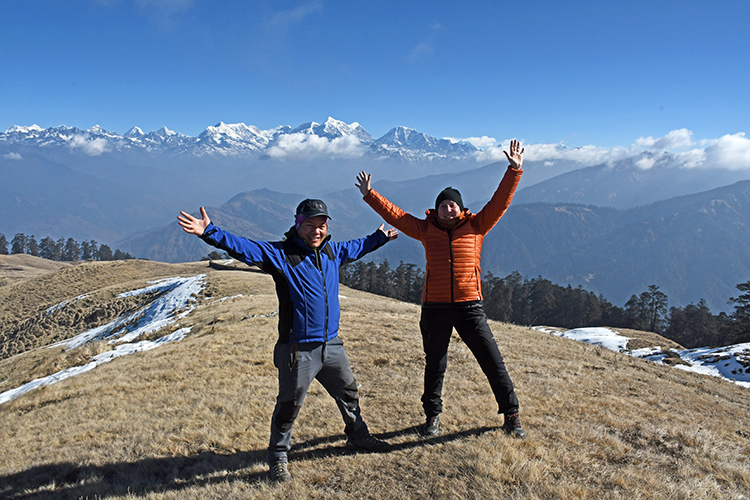
On the fourth day:
We woke up early and headed to a nearby hilltop. As I walked ahead of Man and Macha, I encountered a beautiful creature I had never seen before—a Palm Civet. There were 6-7 burrows on the hilltop, which I assumed were its shelters for the night. Perhaps sensing my presence, it decided to leave its shelter. I was initially shocked when I realized it was just a few meters away from me, but it wasn’t scared. It simply turned around, walked behind the burrows, and continued downhill. I managed to capture a video clip and some photographs of the Palm Civet, which I later discovered to be its identity.
As we arrived, the sun was just beginning to rise, creating an amazing morning atmosphere. The view to the east was partially obstructed by sunlight, but the Everest and Numbur Himal Mountain ranges looked stunning with the morning light. The sky was clear, the wind was calm, and the temperature wasn’t too cold. We spent a wonderful half-hour there and enjoyed the scenery. We returned to the lodge, packed our things, and enjoyed a breakfast of Thukpa (local noodle soup) with tea and coffee. In the cold weather, the combination of hot soup and noodles was especially satisfying for us. Around 8 am, we left the lodge and headed towards Demba Danda.
As we approached the top of Demba Danda, the weather became cloudy. There were two summits—one with a concrete pillar, which served as a geographical marker and was also believed by locals to symbolize a gold mine, and the other with a view tower, slightly lower in elevation. When we reached the first summit, it was very cloudy, and I felt a bit disappointed. However, as we made our way to the second summit, the sky began to clear. By the time we reached the second summit, the sky was almost completely clear and sunny. We savored the breathtaking view, capturing numerous photographs and videos. We could see the Manaslu, Ganesh Himal, Langtang, Jugal Himal, Gaurishankar, Numbur Himal, Everest, and Makalu mountain ranges. It was a stroke of luck to witness such a spectacular sight, filling us with happiness.
Heading south from the summit, we descended to Chuplung Bhanjhyang. The path was steep but well-maintained, with no snow on that side and plenty of sunshine. During the descent, Macha and I engaged in conversations about world politics and war history, discussing topics ranging from Roman history to Napoleon’s bravery and Genghis Khan’s warfare. As we chatted and enjoyed the beautiful scenery before us, we arrived at Chuplung Bhanjyang. We reached there just before noon—it wasn’t a long day’s journey. Chuplung is a Sherpa village that has been a transit point for travelers since its inception. Although not a large village, it exuded beauty. Just before the village, there was a striking Buddhist Stupa and some Mani walls. The place appeared a bit dusty, likely due to the dirt road and ongoing construction. The place we stayed at was a homestay lodge with a shop that sold various goods and a local restaurant. The lady running the restaurant, named Ang Maya, prepared delicious food. She had been in the local restaurant business since a young age.
After a delicious meal, there wasn’t much to do for the rest of the day, so we relaxed, took a local shower, did some laundry, and rested.
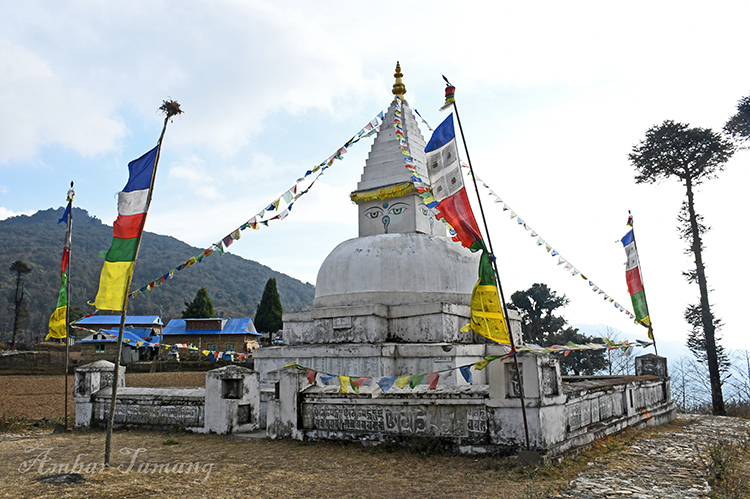
On the fifth day: We trekked to Pokali Jharana. It was a challenging day trek with a steep downhill. Our journey began around 8:30 am after the breakfast. Unfortunately, the Himalayas were hidden behind the Thole Demba Hills and today the sky was overcast. Despite that, the trek was quite interesting, as we passed through charming villages, picturesque meadows, lush green forests, and terraced farmlands. We ascended about 300m and descended over 1700m throughout the day. In the afternoon, we heard thunder but fortunately, no rain. Along the way, we encountered many villagers and got a glimpse into their daily lives.
The trail for the first hour was mostly level with a gradual uphill climb towards Chuli hill. We came across a small artificial pond, which used to be natural before a forest fire dried it up. This pond is considered holy and a few meters uphill from there, we found the Sat Kanya Devi Shrine dedicated to the local goddesses, worshipped mainly by Shamans. The shrine features seven-colored stones symbolizing the Sat Kanya Deities. Once a year, a grand fair takes place where devotees gather to express their faith and worship the goddesses.
The long descent from Chuli continued until we reached Pokali. Along the way, we stopped at Boudha for lunch. Next to the Tea shop, we stopped was a “Stupa of Descent from Tushita Heaven,” one of the eight magnificent Buddhist stupas. Leaving behind the Sherpa and Tamang villages, we entered the Chhetri-Brahman and Sunuwar Rai villages. The houses and faces of the people started to change. These days, bumpy dirt roads have become more common, with fewer people using hiking trails. Nevertheless, we tried to stick to the regular trail and avoid the dirt road. In one section, the path was almost impassable, with a very steep terrain alongside a massive cliff. Descending this part was quite challenging for us.
After trekking for about eight hours, we finally reached Pokali village and sought accommodation at a Brahman’s house for the night. The house was spacious, beautiful, and artistically designed. The family was in the process of preparing two rooms for guests as they planned to run a homestay. However, upon our arrival, only one room was ready. We could see a waterfall from our place but decided to venture closer. It was about a 15-minute walk from the house. Pokali Jharana is a popular destination among domestic tourists, boasting a waterfall with two stages. The final and tallest stage measures 130m. Local people claim it to be the second-tallest waterfall in Nepal. Although the water level was relatively low due to late winter and water being diverted for irrigation, it still remained captivating and worth visiting. We arrived just before sunset, creating a delightful atmosphere.
The Brahman family treated us to a delicious dinner of Dal Bhat Tarkari, a traditional Nepali dish consisting of rice, potato and cauliflower curry, spinach, chutney, and a generous serving of homemade yogurt. The wife of the family was exceptionally friendly and shared great stories about her family and travels. It felt like a warm and homely environment. We were extremely pleased with their hospitality and everything they offered us.
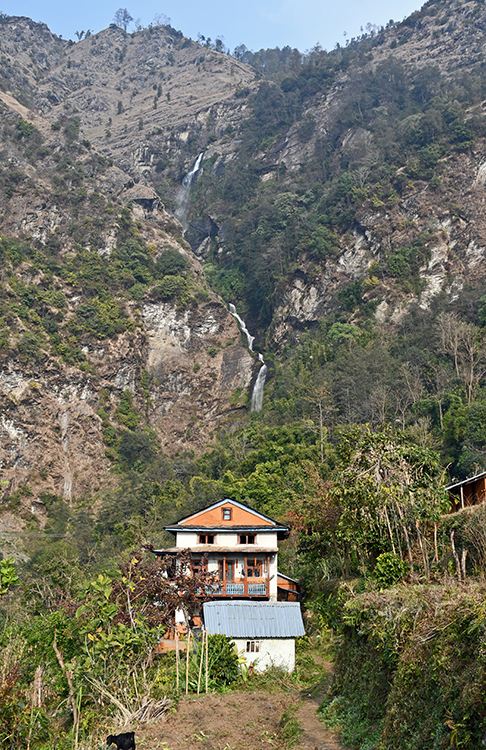
On the sixth day: We woke up at around 4:30 am. The Brahman family prepared tea for us early in the morning. After bidding farewell to the family, we trekked for about 2 hours to reach Dhade, where we caught a Jeep to Kathmandu. We waited for about an hour and a half before the Jeep arrived. The Jeep was small and already packed with passengers. Normally, it can accommodate 9 people, but there were already 8 passengers inside when we boarded, making a total of 10. Although I had reserved 3 seats the previous day, there were only 2 available when it arrived. Nevertheless, we had to return to Kathmandu, so we didn’t argue much and got into the Jeep.
The first part of the road until Manthali was quite dusty and bumpy, but I slept for most of the journey, probably due to motion sickness medication. Consequently, I didn’t notice much. We reached Kathmandu without much delay, and overall, the road trip was fine.
In general, our trip was incredibly enjoyable, fun, and interesting. None of the days were boring or difficult for us. We were always impressed by the warm hospitality, love, and happiness of the villagers. The facilities we received exceeded our expectations, and the trekking path was not as challenging as anticipated. The lush green forests, breathtaking terraced fields, and the majestic Himalayan view always fascinated us.
Note: From Demba Danda as its connecting point to Pikey Peak Trekking, allowing you to conclude your trek either in Phaplu or Dhap.
Written By: Ambar Tamang
Founder/Guide: Blossom Expeditions
P. O. Box No: 21101, Kapan-12,
Kathmandu, Nepal.
Telephone: 977-01-4810388
Mobile: 977-9851123762
WhatsApp/Viber: 977-9841454462
blossomexpeditions@gmail.com
www.blossomexpeditions.com
Trek Video: Thole Demba Trekking
Pikey Peak Thole Demba Trekking
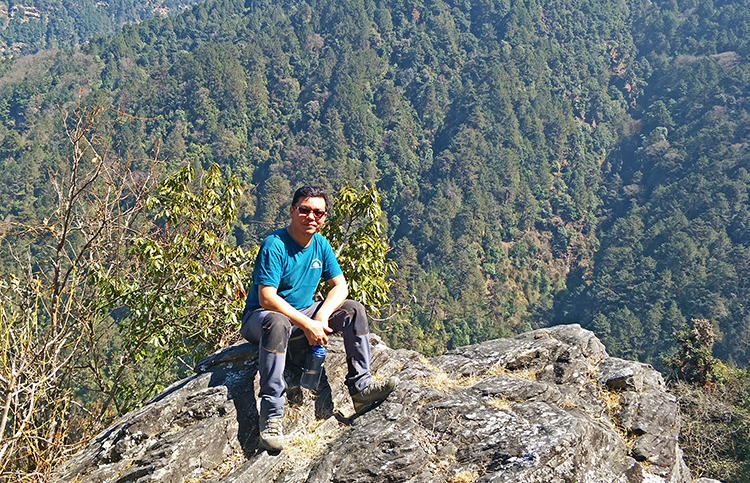
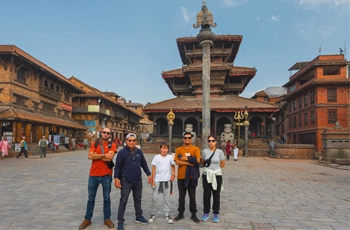
Introduction to the Nagarkot Day Tour Most of the Nagarkot 1-day tours we organize are truly unforgettable. Located at an altitude of 1,930 meters above sea level, Nagarkot is a popular tourist destination near Kathmandu city. From this hilltop, you can enjoy breathtaking sunrises and spectacular views of the majestic Himalayas, including Mount Everest. The surroundin...
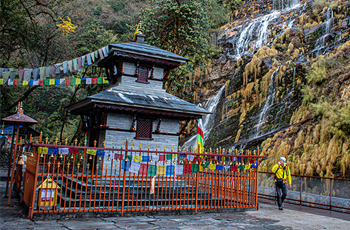
An Unforgettable Journey Through Nepal’s Majestic Himalayas Experience the best of Nepal with a unique trek combining the famous Annapurna Base Camp and the peaceful Khopra Danda, popularly known Khayar Lake Trek. Discover stunning mountains, local culture, and hidden trails. In late November 2024, we went on an amazing adventure in the heart of Nepal's Himalayas. ...
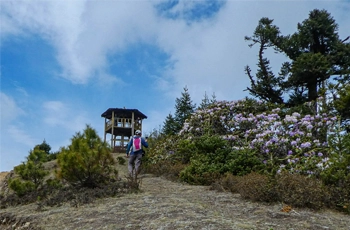
A Journey into Nepal’s Hidden Paradise Our trip to Jumla and Rara Lake in 2024 was an incredible adventure into a really beautiful and remote part of Nepal. Rara Lake, the biggest freshwater lake, is located in the far northwest of Nepal, surrounded by green forests, mountains, and amazing scen...
Comments